How Was Junagarh Fort Bikaner History Connected to Rajput Royalty?
Did you know that Junagarh Fort stands as one of only three major forts in Rajasthan never conquered by invading armies? While 90% of Indian forts faced multiple sieges and defeats, junagarh fort bikaner history tells a different story. This unconquered fortress represents 436 years of unbroken Rajput royal legacy. Built in 1589, the fort complex spans 5.28 hectares and houses 37 palaces, temples, and pavilions that showcase pure Rajput architectural genius.
Your journey through junagarh fort bikaner history reveals how Rajput royalty transformed the desert land into an impregnable symbol of power. The fort’s connection to Rajput dynasties runs deeper than stone and mortar. It represents warrior culture, strategic brilliance, and artistic excellence that defined Rajasthan’s royal families for centuries.
Unlike other Rajasthani forts built on hilltops, Junagarh sits on plain ground. This unusual choice reflects the confidence and military prowess of its Rajput creators. You’ll discover how Rai Singh, a trusted general of Emperor Akbar, channeled both Mughal sophistication and Rajput tradition into creating this architectural masterpiece. The fort became home to twenty successive rulers from the Rathore dynasty, each adding their unique architectural signature while maintaining the core Rajput identity.
Travel The World Today guides you through understanding this magnificent monument’s royal connections. Whether you’re planning your 2025 visit or researching Indian heritage, this comprehensive guide covers everything about junagarh fort bikaner history and its inseparable link to Rajput royalty.
What Makes Junagarh Fort Bikaner History So Unique?
The Unconquered Fortress Story
Junagarh fort bikaner history stands apart because no foreign invader ever breached its walls. This achievement seems remarkable considering the turbulent medieval period when Rajasthan witnessed constant warfare. The fort survived attacks from rival kingdoms, Mughal campaigns, and regional conflicts while remaining firmly under Rajput control.
Rao Bika founded Bikaner city in 1488, but the original fortification proved inadequate for growing royal ambitions. Raja Rai Singh recognized this limitation and commissioned Junagarh’s construction exactly 101 years later. He designed the fort using lessons learned from decades of military campaigns across northern India. The result was a fortress that combined cutting-edge 16th-century defensive technology with traditional Rajput architectural elements.

The fort’s invincibility stemmed from multiple factors. First, Raja Rai Singh positioned it strategically on flat terrain surrounded by moats and thick walls. Second, he incorporated 986-meter-long walls with 37 bastions that provided 360-degree defensive coverage. Third, internal water reservoirs and storage facilities allowed the fort to withstand prolonged sieges. These features made junagarh fort bikaner history synonymous with Rajput military excellence.
Architectural Distinctions
Your exploration reveals architectural elements that make Junagarh unique among Indian forts. The complex blends Rajput, Mughal, and Gujarati styles into a cohesive design vocabulary. Red sandstone dominates the exterior, while interiors feature intricate marble work, gold leaf detailing, and semi-precious stone inlays.
Unlike defensive-only structures, Junagarh functioned as both fortress and palace. The royal family actually lived within these walls, requiring luxurious residential quarters alongside military installations. You’ll find ornate balconies called jharokhas, latticed windows for privacy, and elaborate courtyards where royal ceremonies occurred. This dual nature distinguishes junagarh fort bikaner history from purely military fortifications.
The fort contains 37 separate structures including Anup Mahal, Ganga Niwas, and Phool Mahal. Each palace showcases different architectural evolution periods spanning four centuries. Some rooms display pure Rajput aesthetics with bold colors and geometric patterns, while others incorporate delicate Mughal floral motifs and Persian calligraphy.
How Did Rajput Royalty Shape Junagarh Fort’s Foundation?
Rai Singh’s Vision in 1589
Raja Rai Singh represents the pivotal figure in junagarh fort bikaner history. Born in 1541, he served as one of Emperor Akbar’s most trusted generals and participated in major Mughal military campaigns. His exposure to Mughal architecture, Persian engineering, and diverse building techniques profoundly influenced Junagarh’s design.
Rai Singh commissioned Junagarh’s construction on January 17, 1589, selecting Karan Chand as the chief architect. The construction took approximately four years, employing thousands of laborers and craftsmen. Rai Singh invested his personal wealth earned through Mughal service, demonstrating his commitment to creating a lasting Rajput legacy. He wanted a fort that reflected both his warrior status and refined cultural sensibilities.
The timing proved crucial. By 1589, gunpowder warfare had transformed siege tactics across India. Rai Singh designed Junagarh to withstand cannon fire, incorporating thicker walls and strategic bastions. He also ensured the fort projected royal power through magnificent gateways and imposing facades. This combination of military functionality and aesthetic grandeur became Junagarh’s defining characteristic.
The Bika Dynasty Connection
Understanding junagarh fort bikaner history requires knowing the Rathore clan’s background. Rao Bika, a Rathore prince from Marwar (Jodhpur), established Bikaner as an independent kingdom in 1488. He belonged to the same Rajput clan that ruled Jodhpur, making Bikaner a cadet branch of the powerful Rathore dynasty.
The Rathore Rajputs traced their lineage to the sun god, claiming Kshatriya warrior status in Hindu social hierarchy. This divine ancestry shaped their self-perception and architectural expressions. Every structure within Junagarh fort reinforced this royal identity through sun motifs, warrior sculptures, and inscriptions documenting genealogy. You’ll notice sun symbols carved into palace walls and gates, constantly reminding visitors of the rulers’ celestial connections.
Rao Bika’s descendants ruled Bikaner continuously until Indian independence in 1947. This unbroken royal succession created architectural continuity within Junagarh. Unlike forts that changed hands between different dynasties, Junagarh evolved under single-family patronage. Each successive maharaja added new palaces and pavilions while respecting existing structures, creating a layered architectural history spanning four centuries.
Which Rajput Rulers Left Their Mark on the Fort?
Raja Rai Singh: The Founder (1571-1612)
Raja Rai Singh’s 41-year reign transformed Bikaner from a minor desert kingdom into a significant regional power. His military successes under Akbar brought wealth and prestige that funded Junagarh’s construction. Beyond building the fort, he established the administrative and cultural foundations that later rulers expanded upon.
Rai Singh created the original palace complex including the Karan Mahal (now mostly rebuilt). He designed the fort’s defensive perimeter, gates, and basic infrastructure. His architectural choices reflected his dual identity as both Rajput warrior and Mughal courtier. You’ll see this synthesis in structures that combine Rajput boldness with Mughal refinement.

His most significant contribution to junagarh fort bikaner history was establishing building traditions that future rulers followed. He set standards for craftsmanship, material quality, and architectural proportions. Subsequent maharajas added new buildings but maintained Rai Singh’s aesthetic vision, creating architectural harmony across centuries.
Maharaja Gaj Singh (1746-1787)
Maharaja Gaj Singh commissioned Chandra Mahal (Moon Palace), one of Junagarh’s most beautiful structures. He ruled during the 18th century when Rajput kingdoms faced declining Mughal power and rising Maratha influence. Despite political uncertainties, Gaj Singh invested heavily in architectural projects that enhanced the fort’s splendor.
Chandra Mahal showcases intricate mirror work, painted ceilings, and delicate jali screens. The palace served as Gaj Singh’s personal residence and reception area for important guests. He imported Belgian mirrors and Italian tiles, demonstrating global trade connections even in desert Bikaner. These cosmopolitan touches distinguish his contributions within junagarh fort bikaner history.
Gaj Singh also upgraded water management systems, improving living conditions within the fort. He expanded gardens and constructed additional residential quarters for royal family members. His reign represents a golden period when peace allowed focus on cultural rather than military priorities.
Maharaja Surat Singh (1787-1828)
Maharaja Surat Singh’s 41-year reign marked another major building phase. He constructed the magnificent Phool Mahal (Flower Palace) with its elaborate wall paintings and gold leaf work. Surat Singh ruled during British East India Company’s expansion, navigating complex political waters while maintaining Bikaner’s independence.
Phool Mahal demonstrates peak Rajput decorative arts. Every surface features paintings, inlay work, or carved patterns. The palace includes the Anup Mahal throne room where maharajas held official audiences. Surat Singh commissioned Italian-style plasterwork and imported Venetian glass, showing how junagarh fort bikaner history evolved beyond traditional Rajput aesthetics.
He also established the royal armory’s formal collection, gathering weapons from across India and beyond. These arms and armor now form a major museum attraction within the fort. Surat Singh understood heritage preservation, systematically documenting royal possessions and historical records that modern researchers rely upon.
Maharaja Dungar Singh (1872-1887)
Maharaja Dungar Singh built Ganga Niwas, incorporating European architectural elements while maintaining Rajput character. He ruled during high British imperialism when Indian princes balanced traditional authority with colonial reality. Dungar Singh traveled to Europe multiple times, bringing back architectural ideas that influenced his building projects.
Ganga Niwas features Victorian furniture alongside Rajput frescoes, creating an eclectic interior that reflects late 19th-century royal taste. The building includes modern (for that era) amenities like proper ventilation systems and bathroom fixtures. These practical improvements made junagarh fort bikaner history relevant to contemporary living standards without sacrificing historical character.
Dungar Singh also photographed extensively, creating visual documentation of the fort’s condition in the 1880s. These photographs provide invaluable records for current conservation efforts. His forward-thinking approach to heritage preservation ensures we can understand and maintain Junagarh’s architectural integrity today.
How Does the Architecture Reflect Rajput Royal Power?
Palace Complexes Within the Fort
Junagarh fort bikaner history comes alive through its 37 distinct palace structures. Each palace served specific royal functions, from private residences to public audience halls. This functional specialization reflects sophisticated court protocols that governed Rajput royal life.
Anup Mahal stands as the most ornate throne room where maharajas received important visitors and dispensed justice. Gold leaf covers walls and ceilings, creating an overwhelming impression of wealth and power. The throne platform, crafted from wood covered with gold foil, elevated the ruler above courtiers. Red and gold dominated the color scheme, traditional Rajput colors symbolizing valor and prosperity.

Karan Mahal served as the original residential palace with private chambers and family quarters. Built by Rai Singh, it featured more restrained decoration suitable for daily living. The palace included separate wings for maharaja, maharani (queen), and royal children, reflecting strict hierarchy even within family spaces. Latticed screens allowed royal women to observe court proceedings without being seen, accommodating purdah (veiling) customs.
Badal Mahal (Cloud Palace) showcases exceptional fresco paintings depicting clouds, gods, and mythological scenes. Artists created these paintings using natural pigments that retained vibrancy for centuries. The palace name refers to the cloud motifs covering walls and ceilings, creating an illusion of living under open sky. This artistic achievement demonstrates the cultural sophistication that characterized junagarh fort bikaner history.
Courtyards and Royal Chambers
Courtyards functioned as transitional spaces between public and private fort areas. The Diwan-i-Aam (Public Audience Hall) featured a large courtyard where common subjects could approach the maharaja with petitions. This architectural arrangement reinforced royal accessibility while maintaining appropriate distance and security.
Private courtyards within residential palaces provided outdoor space for royal family recreation. These intimate areas included fountains, gardens, and shaded pavilions where royals escaped summer heat. High walls ensured complete privacy from fort garrison and servants. The courtyards’ design reflected Persian chahar bagh (four-garden) concepts adapted to Rajput aesthetics.
Royal chambers within Junagarh demonstrate remarkable craftsmanship. Bedroom walls feature miniature paintings depicting romantic themes, hunt scenes, and religious imagery. Carved wooden ceilings with intricate geometric patterns display mathematical precision and artistic vision. Every architectural element served both functional and symbolic purposes, constantly reminding inhabitants of their royal status.
Zenana (women’s quarters) occupied the most protected fort section with limited access points. These buildings featured elaborate jharokhas (overhanging balconies) where royal women could observe outside activities without compromising privacy. The architecture balanced security requirements with comfort needs, creating living spaces that were both protective and pleasant.
What Role Did Junagarh Fort Play in Rajput Military Strategy?
Defensive Features
Junagarh fort bikaner history reveals sophisticated military engineering that protected Bikaner’s rulers for over four centuries. The 986-meter perimeter wall stands 14.5 meters high with a base thickness of 4.5 meters, designed to withstand both siege equipment and cannon fire. This massive construction required moving millions of cubic feet of sandstone and employing advanced masonry techniques.
Thirty-seven bastions project from the main wall at strategic intervals, providing overlapping fields of fire. Defenders could shoot arrows, drop stones, or fire muskets at attackers from multiple angles simultaneously. Each bastion included internal chambers for storing ammunition and sheltering soldiers during prolonged battles. The bastions’ design reflects Rai Singh’s firsthand combat experience.
A deep moat originally surrounded the entire fort perimeter, filled with water during peacetime and potentially with thorny bushes during conflicts. Attackers faced a two-stage obstacle: first crossing the moat, then scaling or breaching the massive walls. This layered defense proved insurmountable for every army that attempted conquest.

Two primary gates controlled fort access: Suraj Pol (Sun Gate) and Karan Pol. These massive wooden doors reinforced with iron spikes could withstand battering rams. Guard towers flanked each gate, allowing defenders to observe and engage approaching enemies. Internal courtyards behind gates created kill zones where attackers could be trapped and eliminated.
Battle History
Despite its formidable defenses, junagarh fort bikaner history records surprisingly few actual battles. The fort’s reputation and visible strength deterred most potential attackers. This psychological warfare aspect represents Rai Singh’s strategic genius—building a fortress so imposing that enemies chose negotiation over assault.
Regional conflicts with neighboring Rajput kingdoms occasionally threatened Bikaner. The Jodhpur Rathores, from whom Bikaner’s rulers descended, sometimes disputed succession and territory. However, these family conflicts rarely escalated to full sieges. The fort’s strength encouraged diplomatic solutions over military confrontations.
During Aurangzeb’s reign (1658-1707), Mughal-Rajput relations deteriorated significantly. Many Rajput forts faced Mughal siege and capture. Junagarh avoided this fate partly through careful diplomacy and partly through its defensive capabilities. Bikaner’s maharajas maintained working relationships with the Mughal court while preserving local autonomy—a delicate balance that junagarh fort bikaner history exemplifies.
Maratha raids in the 18th century posed another threat. Maratha cavalry swept across Rajasthan, extracting tribute from various kingdoms. Bikaner paid chauth (tribute) to avoid conflict, using economic rather than military means to preserve independence. The fort provided secure negotiating position, allowing rulers to bargain from strength rather than weakness.
How Can You Explore Junagarh Fort’s Royal Heritage Today?
Museum Collections
Junagarh Fort Museum opened in 1961, transforming the historic complex into a public heritage site. The museum preserves and displays artifacts that bring junagarh fort bikaner history to life for modern visitors. Your exploration includes royal weapons, miniature paintings, manuscripts, textiles, and furniture spanning four centuries.
The armory collection showcases Rajput military technology evolution. You’ll see everything from medieval swords and daggers to 19th-century rifles and pistols. Particularly impressive are the decorated ceremonial weapons with gold inlay, jeweled hilts, and intricate engravings. These pieces served both practical combat purposes and symbolic representation of royal power.
Miniature paintings within the museum represent one of India’s finest collections of Bikaner school artwork. These paintings document royal life, religious themes, and court scenes with remarkable detail. Artists used natural pigments and delicate brushwork to create images that remain vibrant centuries later. The collection helps you understand the cultural sophistication surrounding junagarh fort bikaner history.
Royal carpets and textiles demonstrate the luxury that characterized maharaja lifestyles. Persian carpets, embroidered wall hangings, and silk garments show international trade connections and refined aesthetic tastes. The textile collection includes royal wedding clothes, ceremonial costumes, and everyday garments that provide insights into dress codes and fashion evolution.
Palace Tours
Your visit includes guided tours through multiple palace structures, each offering unique perspectives on junagarh fort bikaner history. Standard tours cover main highlights over 60-90 minutes, while extended tours provide deeper exploration of specific palaces and collections. Knowledgeable guides share historical anecdotes and architectural details that enhance understanding.
Self-guided audio tours offer flexibility for independent exploration. These provide historical context and architectural information in multiple languages while letting you proceed at your own pace. The audio guides include former royal family members’ recorded commentary, adding personal perspectives to historical facts.

Photography permissions allow you to capture Junagarh’s beauty, though flash photography inside palaces is prohibited to protect delicate paintings and textiles. The fort’s Instagram-worthy locations include Anup Mahal’s golden interiors, Chandra Mahal’s mirror work, and panoramic views from fort walls. Travel The World Today recommends morning visits when natural light enhances architectural photography.
Special access tours occasionally offer visits to normally closed sections, including private collections and restoration areas. These premium experiences provide behind-the-scenes looks at conservation work and rarely seen artifacts. Check the museum’s official schedule for special tour availability during your visit dates.
Best Visiting Times
October through March represents ideal visiting season when Bikaner’s desert climate remains comfortable. Daily temperatures range from 10-25°C (50-77°F), perfect for exploring outdoor courtyards and fort walls. Summer months (April-June) bring extreme heat exceeding 45°C (113°F), making extended tours physically challenging.
Morning hours (9:00-11:00 AM) offer optimal visiting conditions before midday heat intensifies. Early arrival also means smaller crowds, allowing more intimate exploration of junagarh fort bikaner history. The soft morning light creates perfect conditions for photography, particularly in palace interiors with natural illumination.
Weekday visits generally provide better experiences than weekends when domestic tourism increases significantly. Tuesday through Thursday typically see lightest crowds, allowing more personal space and clearer photographs. If you must visit weekends, arrive exactly at opening time to stay ahead of tour groups.
Special events including cultural festivals and light shows occasionally occur within the fort complex. These events provide unique perspectives on junagarh fort bikaner history through music, dance, and theatrical performances. Travel The World Today recommends checking the annual calendar for special programming that might coincide with your visit.
Where Does Travel The World Today Fit Into Your Journey?
Travel Maps for 2025
Where can you find the best travel maps of the world for 2025? Travel The World Today provides comprehensive mapping resources specifically designed for heritage tourism and historical site exploration. Their 2025 travel maps include detailed Rajasthan coverage with GPS coordinates, accommodation recommendations, and itinerary suggestions connecting multiple fort visits.
The Rajasthan Heritage Circuit map positions Junagarh Fort within broader exploration of Rajasthan’s architectural treasures. You can plan multi-day itineraries visiting Jaipur’s Amber Fort, Jodhpur’s Mehrangarh Fort, and Bikaner’s Junagarh Fort using integrated route planning. The maps account for travel distances, road conditions, and optimal seasonal timing for each destination.
Digital mapping tools from Travel The World Today work on smartphones and tablets, providing real-time navigation and location-based information. As you explore Junagarh, the app delivers relevant historical facts, architectural details, and photography tips based on your exact position within the fort. This technology-enhanced experience enriches understanding of junagarh fort bikaner history.
Printed travel maps remain valuable for travelers preferring traditional navigation or lacking consistent internet connectivity. Travel The World Today’s 2025 printed maps feature waterproof paper, detailed legends, and highlighted points of interest including restaurants, hotels, and transportation hubs around Bikaner. These physical maps serve both practical navigation and memorable travel souvenirs.
Planning Your Visit
Travel The World Today guides you through every stage of planning your junagarh fort bikaner history exploration. Their comprehensive planning resources address logistics, budgeting, cultural preparation, and expectation setting for first-time visitors to Rajasthan’s heritage sites.
Transportation planning helps you reach Bikaner efficiently from major Indian cities. The guide covers flight options to Jodhpur (250 km away) or Jaipur (330 km away), followed by road transport to Bikaner. Train enthusiasts will appreciate detailed information about Bikaner Junction railway connections from Delhi, Mumbai, and Kolkata. Local transportation options including auto-rickshaws, taxis, and rental cars receive thorough coverage.
Accommodation recommendations span budget guesthouses to heritage hotels, helping you find lodging matching your preferences and budget. Travel The World Today particularly highlights hotels near Junagarh Fort offering easy access and views of the historic complex. Heritage hotels converted from royal residences provide immersive experiences complementing your fort visit.
Cultural preparation tips ensure respectful and enriching interactions with junagarh fort bikaner history. The guide explains appropriate dress codes for temple areas within the fort, photography etiquette, and respectful behavior in spaces that remain culturally significant to local communities. Understanding these cultural nuances enhances your travel experience and demonstrates respect for Indian heritage.

Complete Visitor Information Table
| Category | Details |
|---|---|
| Location | Bikaner, Rajasthan, India (Pin Code: 334001) |
| Opening Hours | 10:00 AM – 4:30 PM (Daily) |
| Entry Fee | Indians: ₹50, Foreigners: ₹300, Camera: ₹50 |
| Recommended Duration | 2-3 hours for thorough exploration |
| Best Season | October to March |
| Guided Tours | Available in Hindi, English (₹100-200) |
| Accessibility | Limited wheelchair access due to historical structure |
| Photography | Allowed (no flash inside palaces) |
| Nearby Attractions | Lalgarh Palace, Camel Breeding Farm, Karni Mata Temple |
| Distance from Airport | 20 km from Bikaner Airport (limited flights) |
| Distance from Railway | 3 km from Bikaner Junction Railway Station |
Key Architectural Features You Shouldn’t Miss
Your exploration of junagarh fort bikaner history should prioritize these architectural highlights:
- Anup Mahal (Diwan-i-Khas) – The coronation hall featuring exceptional gold leaf work and Italian plaster artwork. The multi-level wooden ceiling showcases geometric precision rarely seen in Indian architecture.
- Chandra Mahal – Mirror work chambers where candlelight once created magical reflections. Belgian glass mirrors cover walls and ceilings, creating infinite visual depth.
- Phool Mahal – Floral motif paintings covering every surface demonstrate artistic dedication. The private audience hall served as the maharaja’s personal reception space for honored guests.
- Karan Mahal – Original palace built by Raja Rai Singh showing early architectural vision. Though later buildings overshadow it, Karan Mahal represents the foundational aesthetic that influenced all subsequent construction.
- Ganga Niwas – Victorian-Rajput fusion architecture reflecting late 19th-century cosmopolitan influences. The building includes the royal library with rare manuscripts and historical documents.
- Badal Mahal – Cloud-themed frescoes creating atmospheric ambiance unique in Rajput architecture. The painting technique used here differs from standard Bikaner school methods, suggesting influence from Deccan artists.
- Suraj Pol (Sun Gate) – Main entrance featuring inscriptions documenting fort construction history. The gate’s massive doors and defensive architecture demonstrate military engineering excellence.
- Dungar Mahal – Museum galleries displaying royal possessions including weapons, textiles, and paintings. The systematic collection arrangement helps visitors understand junagarh fort bikaner history chronologically.
What Experts Say About Junagarh Fort
Dr. Giles Tillotson, architectural historian: “Junagarh represents an extraordinary synthesis of military functionality and palatial luxury. Unlike most Rajput forts that prioritize defense, Junagarh successfully integrates battlefield pragmatism with courtly aesthetics, creating spaces that were simultaneously secure and supremely comfortable.”
Professor Rima Hooja, Rajasthan historian: “The fort’s architectural evolution across four centuries provides unparalleled insights into changing Rajput identity. Each successive building phase reveals how Bikaner’s rulers negotiated modernity while maintaining cultural continuity, making Junagarh essential for understanding Rajput adaptation strategies during British colonial period.”
Maharaja Dr. Karni Singh (former ruler of Bikaner): “Our ancestors built not just for their own lifetimes but for posterity. Every stone placed in Junagarh carried the weight of dynastic responsibility and cultural preservation. Walking these corridors means walking through my family’s 500-year journey.”
These expert perspectives emphasize junagarh fort bikaner history’s significance beyond tourism, positioning it as vital scholarly resource for understanding Rajput civilization, architectural evolution, and cultural adaptation.
Conclusion: Your Journey Through Rajput Royal Legacy
Junagarh fort bikaner history represents more than architectural achievement—it embodies Rajput spirit, cultural evolution, and dynastic continuity across tumultuous centuries. Your exploration reveals how warrior princes transformed military necessity into artistic expression, creating spaces that balanced defense requirements with palatial luxury.
The fort’s connection to Rajput royalty runs through every carved stone, painted ceiling, and fortified gateway. Raja Rai Singh’s original vision evolved through twenty successive rulers, each contributing their chapter to an ongoing architectural narrative. This layered history makes Junagarh exceptional among Indian heritage sites, offering insights into royal life, military strategy, and cultural adaptation spanning four centuries.
Unlike conquered forts that changed hands and identities, Junagarh maintained single-dynasty continuity that created unusual architectural coherence. The Rathore rulers’ consistent patronage allowed organic development respecting past achievements while incorporating contemporary innovations. This balance between tradition and modernity characterizes junagarh fort bikaner history and offers lessons about sustainable heritage development.
Your visit to Junagarh Fort becomes more meaningful when contextualized within broader Rajasthan exploration. The fort stands as one element in a magnificent heritage network including Jaipur’s Amber Fort, Jodhpur’s Mehrangarh, and Jaisalmer’s golden fortress. Each site tells unique stories while contributing to comprehensive understanding of Rajput civilization’s complexity and grandeur.
Travel The World Today guides you through planning, experiencing, and appreciating these extraordinary heritage sites. Their 2025 travel maps position Junagarh within optimized itineraries connecting Rajasthan’s architectural treasures
Frequently Asked Questions (FAQs)
Q1: How is junagarh fort bikaner history different from other Rajasthan forts?
Junagarh fort stands on plain ground rather than hilltops, making it unique among major Rajasthani forts. It was never conquered throughout its 436-year history, unlike Chittorgarh or Ranthambore. The fort served continuously as the royal residence until 1947, creating organic architectural evolution absent in abandoned or purely military fortifications.
Q2: Can foreigners visit all areas of Junagarh Fort?
Yes, foreign tourists access the same areas as domestic visitors, including main palaces, courtyards, and museum galleries. Some private family temples and residential sections remain restricted, but these represent less than 5% of the fort complex. Photography restrictions apply in specific galleries protecting sensitive artifacts.
Q3: How long does a complete tour of Junagarh Fort take?
Standard tours require 90-120 minutes covering main highlights. Comprehensive exploration including all palaces, museums, and wall circuits takes 3-4 hours. Photography enthusiasts and architecture students often spend entire days capturing details and studying design elements. Travel The World Today recommends allocating minimum half-day for meaningful junagarh fort bikaner history experience.
Q4: Is Junagarh Fort suitable for children and elderly visitors?
The fort accommodates visitors of all ages, though mobility limitations affect experience. Children generally enjoy weapon displays, colorful paintings, and spacious courtyards. Elderly visitors might find extensive walking and stairs challenging—wheelchairs access ground-level areas but cannot reach upper palace floors. Rest areas with seating exist throughout the complex.
Q5: What’s the best way to reach Junagarh Fort from Delhi?
Overnight trains from Delhi to Bikaner provide comfortable, economical transportation (approximately 10-12 hours). Alternatively, fly Delhi to Jaipur or Jodhpur, then drive to Bikaner (4-5 hours). Direct road trips from Delhi cover roughly 450 km, requiring 7-8 hours. Travel The World Today mapping tools optimize route selection based on your schedule and preferences.
Q6: Are there good hotels near Junagarh Fort?
Multiple accommodation options exist within walking distance. Laxmi Niwas Palace (heritage hotel) offers luxury experience in former royal property. Mid-range options include Hotel Harasar Haveli and Hotel Jaswant Bhawan. Budget travelers find clean guesthouses and hostels starting around ₹500 per night. Booking advance during October-March peak season ensures better availability.
Q7: Can I hire a private guide for Junagarh Fort?
Yes, private guides available at fort entrance or through advanced booking. Rates range ₹500-1,000 for 2-hour tours depending on language and expertise. Government-certified guides display identification badges. Private guides offer more flexibility and deeper specialization than group tours, enhancing junagarh fort bikaner history understanding.
Q8: What should I wear when visiting Junagarh Fort?
Comfortable walking shoes essential due to extensive exploration over uneven surfaces. Modest clothing recommended, particularly covering shoulders and knees when entering temple areas within fort. Sun protection including hats and sunglasses necessary for courtyard exploration. Winter months (December-January) require light jackets for early morning visits.
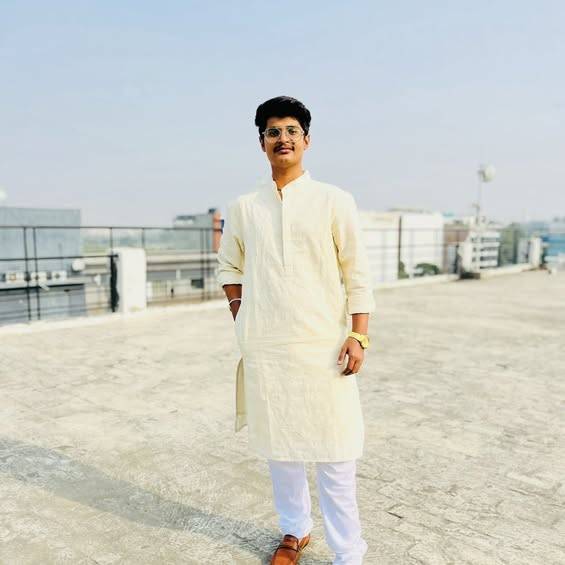
Hi, I am Raghav Ahuja a curious explorer, travel enthusiast, and the voice behind Travel The World Today. I believe in discovering the beauty of every destination without breaking the bank. Through my journeys, I share tips, stories, and travel guides to help you explore the world on a budget. Whether you’re a solo adventurer, a family traveler, or just planning your next escape, I’m here to inspire and guide you every step of the way.
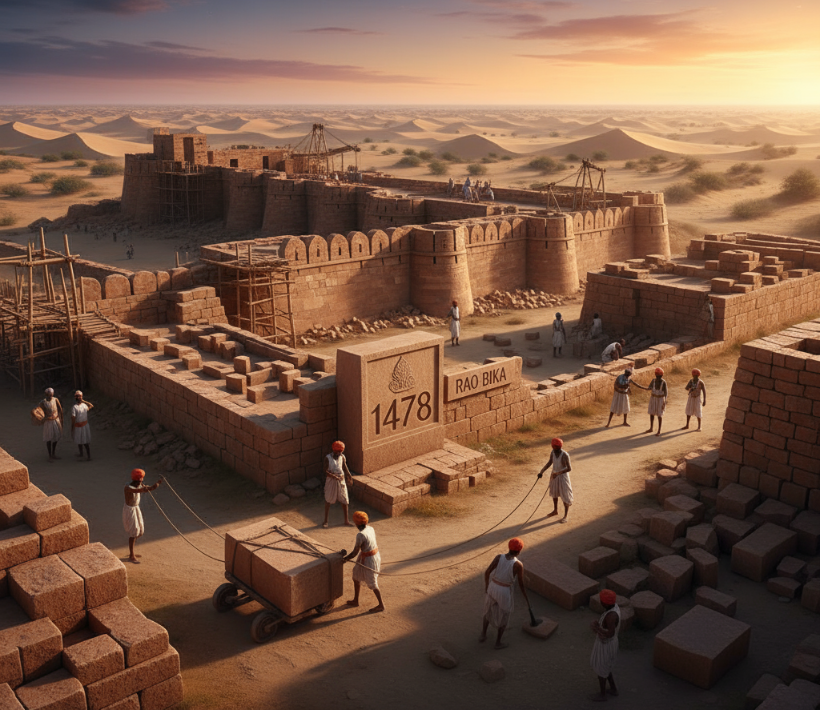

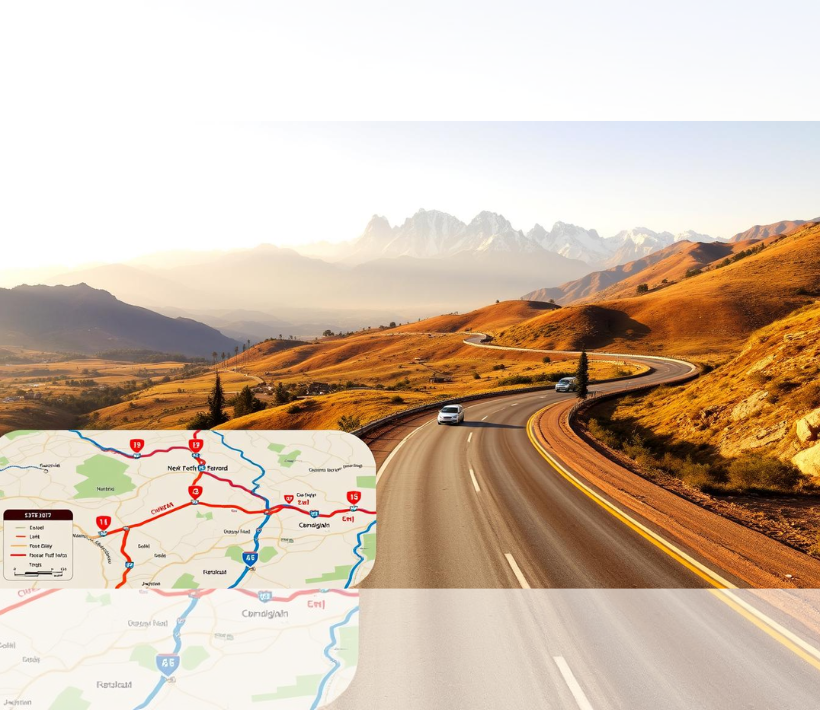

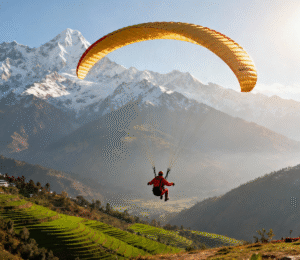
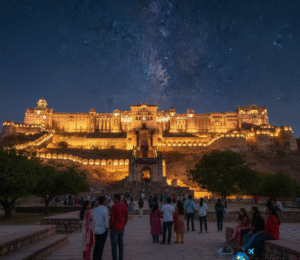

Post Comment